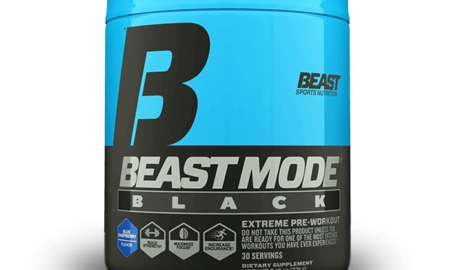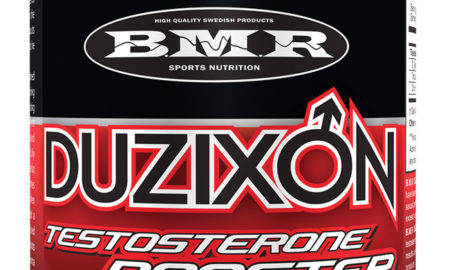Contrary to what is often suggested in the popular media, serious side effects related to anabolic steroids are relatively rare. Side effects that do occur are normally transient and mild, most of the time receding when the drug use stops. The degree to which they can occur depends on three primary factors: 1) how much and how many steroids are used in a cycle, 2) how long the cycle lasts and 3) individual response.
That last factor, individual response, is often overlooked. As I discussed in a recent edition of this column, however, many inborn genetic anomalies that normally remain dormant can be brought to life when a person uses steroids. Thus, some steroid users may be more susceptible to side effects than others because of genetic factors.
Of the most common side effects associated with steroid use, especially with high doses, are those related to liver and cardiovascular function. Even within that category, however, you have to narrow it down a bit. Oral steroids more often present problems when compared to injectable steroids, mainly because orals are designed to resist premature degradation in the liver. While that extends the potency of the drug, it also significantly increases the chance of side effects, again depending on how much the drug is used and how long. That doesn’t mean that injectable drugs are safe, since larger doses and length of use with them can cause similar problems.
Oral steroids have been implicated in a number of studies showing toxic effects on liver function. The most common include elevated liver enzymes, jaundice (a yellow tinge in the skin brought on by increased levels of retained bile salts) and in rare cases more serious problems, such as peliosis, a disease characterized by blood-filled cysts in the liver. The worst scenario, and the rarest, is liver cancer. Thus far, however, the majority of cases of liver cancer have shown up in hospital patients who were given long-term oral steroids.
While the more-serious liver events are rare in athletes who use anabolic steroids, those who take larger doses of oral steroids almost always have a degree of liver inflammation, which shows up as an elevation of certain enzymes. While it usually produces few early symptoms, it does cause a swelling of the liver. That, in turn, blocks the normal circulation of bile salts in the liver, and the bile salts spill out into other tissues, causing jaundice. Low-level inflammation can eventually destroy liver cells. The good news is that this type of side effect recedes when the person stops using steroids, and since the liver has a remarkable capacity for regeneration, any minor damage that may have occurred is usually repaired.
Alcoholism is another factor most associated with liver disease, as excessive drinking results in a fatty liver and the formation of scar tissue, or cirrhosis, which is particularly dangerous, since it’s considered a primary precursor of liver cancer. In recent years, however, another type of liver disease, nonalcoholic fatty liver disease, has risen sharply. It’s called that because it occurs in people who don’t drink alcohol.
Most scientists say that NAFLD is related to insulin resistance and the metabolic syndrome, as well as obesity. Once you achieve a certain level of bodyfat, the fat starts to get deposited in organs and tissues other than fat cells. This ectopic fat, as it’s called, is very dangerous because fat secretes more than 100 different substances, most of which are related to excess body inflammation. Out-of-control inflammation is now known to be the cause of most degenerative diseases, including cardiovascular disease and cancer. NAFLD is also considered a precursor of type 2 diabetes, which is on the rise as well, mainly due to excessive obesity and lack of exercise. Recent studies show that having NAFLD increases the chances of developing diabetes fivefold.
Another possible explanation for NAFLD is the prevalence of drugs and toxins. Taking in such substances appears to cause a buildup of fat in the liver, indicative of liver stress. Fructose is also in the mix, and while it’s a natural sugar, when eaten in excessive amounts, it’s known to account for the same sort of problem.
A surprising additional cause of NALFD is tamoxifen citrate, trade name Nolvadex, an estrogen-blocking drug often favored by those on anabolic steroid cycles. Many steroids can be converted into estrogen by way of the enzyme aromatase, but Nolvadex interfers with estrogen uptake at the cellular level. Given all that, you have to wonder, What about anabolic steroids themselves—can they, too, cause NAFLD?
The question isn’t out of line, particularly as oral steroids are toxic to the liver when used in large amounts for extended periods of time. A new study examined whether anabolic steroids are indeed linked to NALFD.1 The subjects consisted of 180 noncompetitive bodybuilders, 95 of whom had at some point used steroids for more than two years. The other 85 subjects, who hadn’t used steroids, were the controls. Most in the steroid group had used the drugs for periods ranging from two to 10 years, with an average of four years. The doses varied from 200 to 5,200 milligrams, with an average weekly dose of 1,200 milligrams. The main injectables used were nandrolone, boldenone, methenolone and stanozolol. Orals included Dianabol, Anadrol and Anavar.
The results? 12.6 percent of the steroid users met the diagnostic criteria for NAFLD compared to 2.4 percent of the nonsteroid users. One liver enzyme was elevated four times higher in the steroid group than in the controls, and the steroid users also had less high-density-lipoprotein cholesterol, or HDL, which is protective against cardiovascular disease and is lowered with oral steroid use. Twelve of the steroid users had enlarged livers with an infiltration of excess fat.
The most interesting aspect of the study was that none of the bodybuilders had excess bodyfat, the primary risk factor for NAFLD. One guy did, however, have full-blown diabetes—although it wasn’t clear whether he was in the steroid group. Another interesting finding was that both groups had increased blood lipid numbers, and they were slightly higher in the steroid group. Indeed, among the steroid users, 89 percent had low HDL compared to 67 percent in the nonsteroid group. So some of the steroid users had clear cases of NAFLD, despite showing none of the usual risk factors for it, like obesity and insulin resistance. Then how did they get it?
The authors note that anabolic steroids disrupt the normal metabolic pathways for steroid synthesis. That especially pertains to the initial step in the production of steroids, such as testosterone, which involves the conversion of cholesterol into pregnenolone. That’s then converted to other steroids and eventually testosterone through the action of enzymes. When the initial step in steroid synthesis is thwarted by the presence of excess exogenous steroids, the excess cholesterol can lead to more fat in the liver. In addition, studies have shown that when steroids are used, the production of DHEA, an adrenal steroid, also declines, and that has been linked to the degree of severity of NAFLD. Pregnenolone is also the precursor of DHEA synthesis.
Another aspect to consider exactly what causes this condition to damage the liver cells. Emerging evidence points to an excess of noxious by-products of oxygen metabolism called reactive oxygen species, or free radicals. In experiments with rats, ROS caused an increase in mitochondrial swelling, which can lead to destruction of the liver cells. That’s consistent with studies showing that vitamin E, in doses of 800 units or more, appears to help improve NAFLD, since vitamin E is an antioxidant that combats the effects of free radicals on cell membranes.
This is a preliminary study. Based on the findings, you cannot accurately say that every athlete who uses steroids will get NAFLD. If that were true, every bodybuilder in the study would have had the condition. Although the doses used varied widely, those using larger doses for extended times would probably be more likely to acquire NAFLD—but even this is speculative. The one thing for certain is that cases of NAFLD have risen greatly in recent years, and that without question portends serious liver problems in the future.
Editor’s note: Jerry Brainum has been an exercise and nutrition researcher and journalist for more than 25 years. He’s worked with pro bodybuilders as well as many Olympic and professional athletes. To get his new e-book, Natural Anabolics—Nutrients, Compounds and Supplements That Can Accelerate Muscle Growth Without Drugs, visit www.JerryBrainum.com. IM
1 Adriana Schwingel, P., et al. (2011). Anabolic-androgenic steroids: a possible new risk factor of toxicant-associated fatty liver disease. Liver Int. 31(3):358-353.




















You must be logged in to post a comment Login